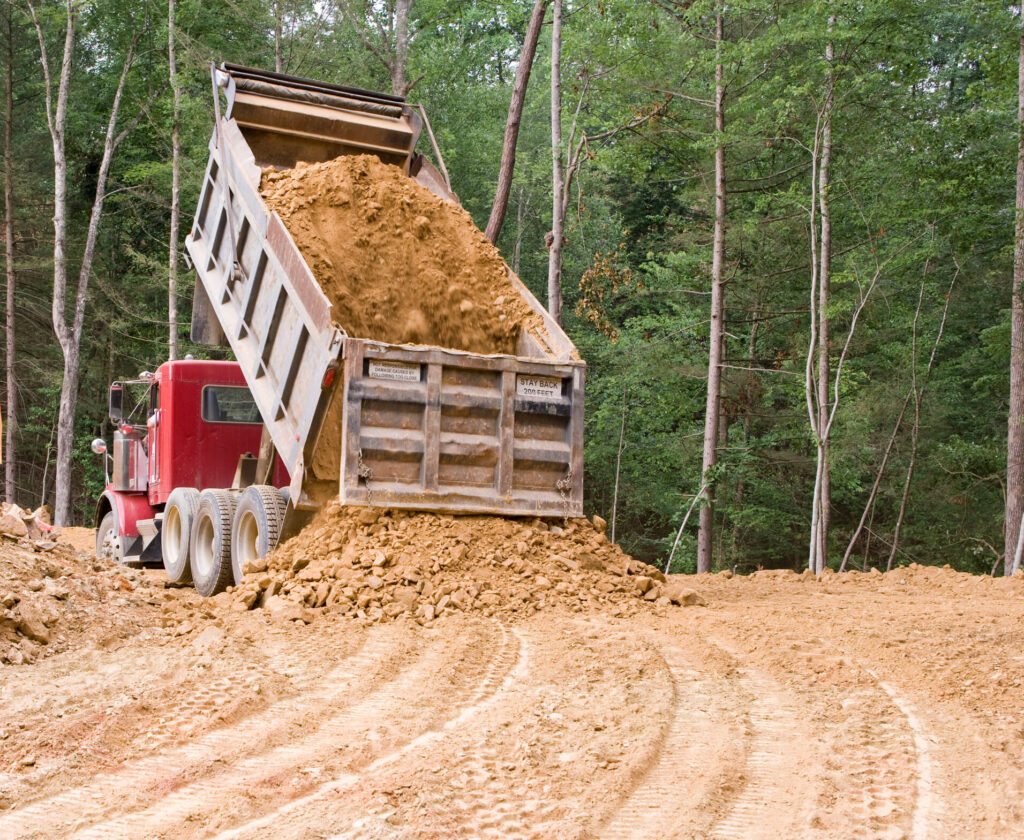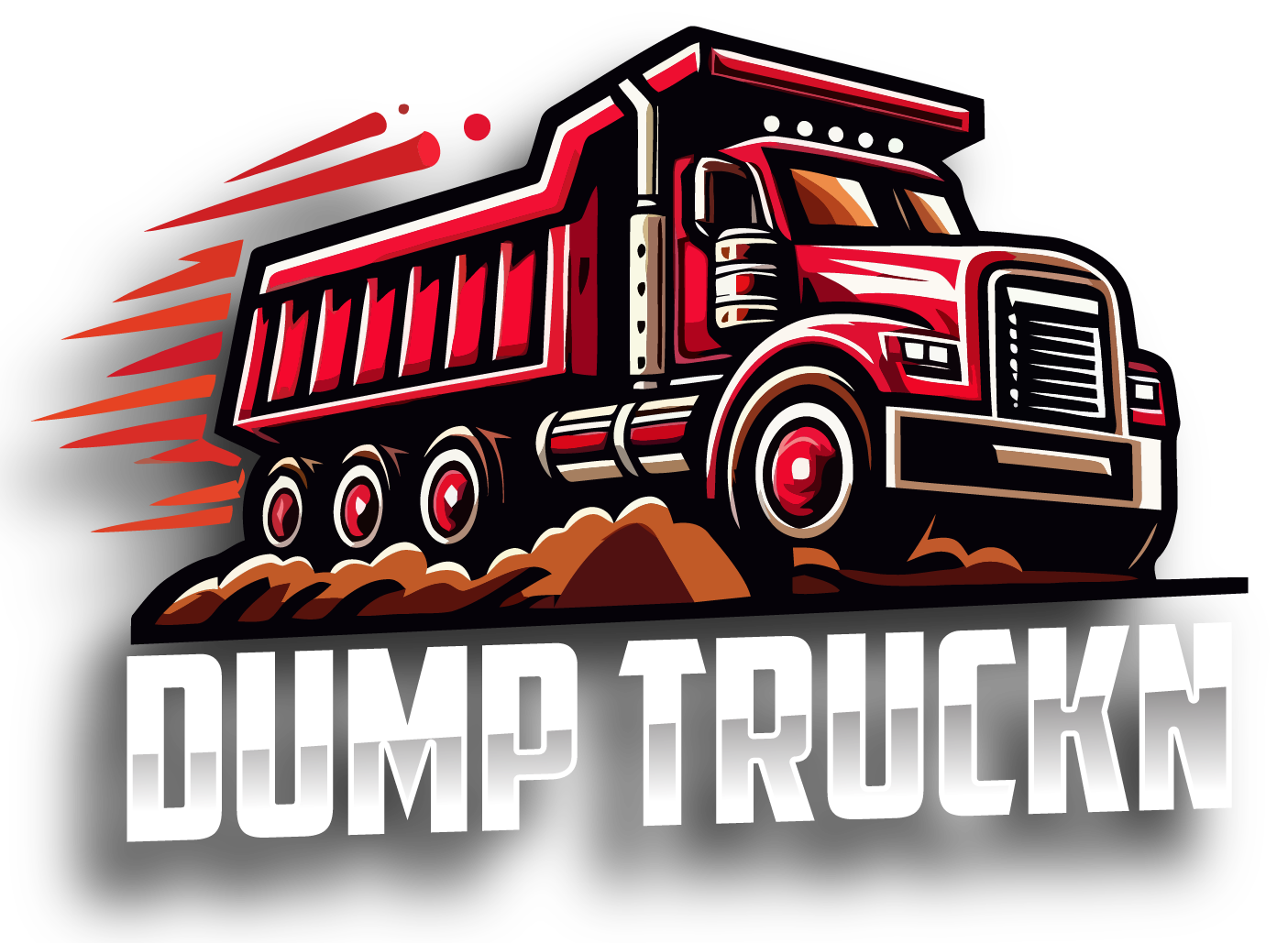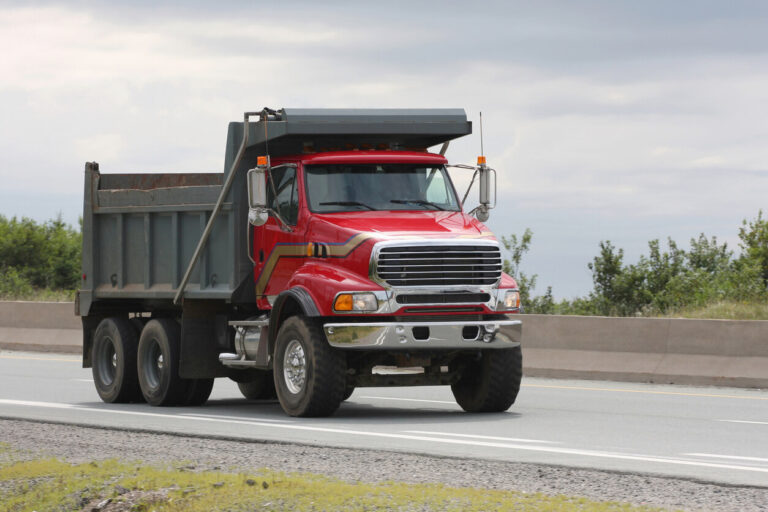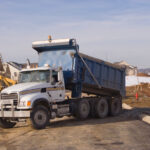Comprehensive Dump Truck Driver Glossary

Comprehensive Dump Truck Driver Glossary:
Essential Terms for Success
This dump truck driver glossary will help you navigate conversations, understand operational processes, and enhance your overall knowledge as a dump truck driver. If you’re stepping into the world of dump truck driving, familiarizing yourself with the industry terminology is crucial.
A
- Air Brakes: Brakes using compressed air.
- Articulated Dump Truck: A type of dump truck that features a pivot joint between the cab and the dump bed, providing improved maneuverability, especially in off-road conditions.
- Axle: A central shaft for rotating wheels or gears. Dump trucks typically have multiple axles to support heavy loads.
B
- Backhaul: Return trip of a truck with cargo.
- Backup Alarm: A safety feature that emits a sound when the truck is reversing, alerting pedestrians and other vehicles.
- Bed: The truck’s cargo area.
- Belly Dump: Another term for underbelly dump.
- Bench Seat: Full-width seat.
- Bobtail: Operating a tractor without a trailer.
- Bogie: Framework holding wheels, attached to a chassis.
- Bottom Dump Truck: A type of dump truck that unloads materials from the bottom of the bed, allowing for more precise placement.
- Brake Chamber: Converts air-pressure into mechanical force for brakes.
- Bulkhead: Vertical barrier at the front of a flatbed trailer.
C
- Cab: The driver’s compartment.
- Cab-Over: Cab over the engine.
- Chassis: The framework that supports the dump truck, including the frame, wheels, and suspension.
- Cluth: Connects and disconnects power transmission.
- Cubic Yard Capacity: The volume of material a dump truck can carry, measured in cubic yards. This is essential for load calculations.
D
- Day Cab: Cab without a sleeper.
- Dead Axle: Non-drive axle.
- Deadhead: Driving without cargo.
- Differential Lock: Locks both axles to turn in unison.
- DOT: Oversees transportation.
- Double Bottom: A truck with two trailers.
- Drivetrain: Components delivering power to the driving wheels.
- Drop Axle: Load-bearing axle for heavy loads.
- Dry Bulk: Unpackaged materials like sand.
- Dump Bed: The container where materials are loaded and unloaded. It tilts to release its contents at job sites.
- Dump Body: Another term for the dump bed, specifically referring to the structure designed to carry and unload materials.
- Dump Gate: The bed’s back door.
E
- End Dump: Unloads from the rear.
- Engine Brake: A system that uses the truck’s engine to slow down the vehicle, helping to control speed on downhill grades.
F
- FAWR: Max allowable weight on the front axle.
- Fifth Wheel: A coupling device that connects the truck to a trailer in semi-trailer dump trucks, allowing for greater maneuverability.
- Freight Ton: Measurement of cargo.
- Fuller: A type of manual transmission.
G
- Gooseneck: Attaches a trailer to a pickup bed.
- Gross Combination Weight: Total weight of vehicle and cargo.
- Gross Vehicle Weight Rating (GVWR): The maximum weight a vehicle is rated to safely carry, including its own weight and the load.
- Grade: The steepness of a slope, which can affect a dump truck’s performance and stability during transport.
H
- Haul Road: A specific road for trucking routes.
- Haulage: The act of transporting materials from one location to another using a dump truck.
- Headache Rack: Barrier behind the tractor cab for protection.
- Hoist: Lifts the dump truck bed.
- Hydraulic Lift System: The system that powers the lifting and tilting of the dump bed. It typically includes a hydraulic pump, cylinders, and hoses.
- Hubometer: Measures distance traveled.
I
- Inter-axle Differential: Between the drive axles, allowing them to rotate at different speeds.
- Inline 6: 6-cylinder engine in a row.
J
- Jackknifing: Trailer and cab folding into a V shape.
- Jake: Another term for Jake Brake.
- Jake Brake: An engine brake.
K
- Kerb Weight: Vehicle weight without passengers or cargo.
- Kettle: Liquid asphalt transport.
- Kingpin: Pin holding the axle in place.
L
- Landing Gear: Supports for a trailer’s front when detached.
- Liner: Protects the bed’s interior.
- Live Bottom: Uses a conveyor for discharging.
- Load Distribution: The way weight is spread across the dump truck to ensure stability and safety during transport.
- Loading Dock: An area where trucks are loaded and unloaded, often found at construction sites and material yards.
- Logbook: Records a driver’s working hours.
- Lowboy: Can carry tall loads.
- Lug: A ridge on a tire to improve traction.
M
- Maneuverability: The ease with which a dump truck can navigate tight spaces and complex job sites.
- Manifest: Document listing cargo, passengers, and crew.
- Material Types: Common materials transported by dump trucks, including gravel, sand, soil, asphalt, and demolition debris.
- Mudflap: Protects vehicles from flying debris.
N
- Nose: Front of the trailer or tractor.
O
- Off-highway Truck: Not meant for road use.
- Outrigger: Provides stability during loading.
P
- Payload: The maximum weight that a dump truck can carry, excluding its own weight. Understanding payload capacity is critical for safety and compliance.
- Piggyback: Transport mode where one vehicle is carried on another.
- Power Divider: Splits engine power between axles.
- PTO (Power Take Off): Transfers power to another part of the vehicle.
- Preventive Maintenance: Regular checks and services performed to keep the dump truck in optimal condition and prevent breakdowns.
Q
- Quad Axle: Four axles.
- Quarter Fenders: Protect the truck from road spray.
R
- Rearview Camera: A safety feature that provides a view of the area behind the truck, enhancing visibility while reversing.
- Reefer: Refrigerated cargo container
- Repair Costs: Expenses associated with fixing issues that arise from wear and tear or accidents.
- Retarder: Slows the truck.
- Rig: Another term for a truck or truck-trailer combo.
- Roll Stability: Prevents rollovers.
- Rollover: Accident causing the truck to tip over.
S
- Safety Features: Elements designed to enhance the safety of dump truck operations, including lights, alarms, and visibility aids.
- Side Dump: Unloads from the side.
- Skirt: Reduces aerodynamic drag under the trailer.
- Sleeper: Area where the driver can rest.
- Sleeper Berth: Sleeping compartment in a cab.
- Spreader: Distributes material evenly.
- Stability: The ability of the dump truck to maintain balance while loaded and during unloading, critical for safety.
- Superdump: A larger version of a dump truck.
T
- Tag Axle: An extra non-driven axle.
- Tailgate: Dump truck’s rear gate.
- Tandem: Two axles together.
- Tandem Drive: Two drive axles.
- Tare Weight: The weight of the truck without any load, used to calculate the payload.
- Tarp System: A mechanism used to cover the dump bed, protecting the cargo during transport and preventing spillage.
- Telescopic Cylinder: Hydraulic Cylinder in dump trucks.
- Tip Angle: The angle at which the dump bed tilts during unloading, affecting how easily materials are released.
- Tipper: Another term for dump truck.
- TMT: Communicates the truck’s position.
- Ton or Tonne: Weight or volume measure.
- Tractor: Semi-trailer truck’s driving part.
- Tractor Trailer: A truck combined with a trailer.
- Transfer Case: Distributes power between axles.
- Transfer Dump Truck: Truck-trailer combo with added payload.
- Transmission: Gears controlling speed and torque.
- Tri-axle: Three axles together.
- Tri-drive: A truck with three drive axles.
- Turbocharger: Increases engine power.
- Twin Steer: Two front steer axles.
U
- U-bolt: U-shaped bolt securing leaf springs.
- Underbelly Dump Truck: Unloads from the bottom.
- Unloading: The process of tilting the dump bed to release materials at a job site.
V
- Vocational Truck: Designed for a specific job.
W
- Weight Distribution: The manner in which weight is spread across the axles to ensure safe handling and compliance with legal weight limits.
- Wet Kit: Hydraulic lifting mechanism.
- Wheelbase: The distance between the front and rear axles, impacting the truck’s stability and turning radius.
Y
- Yard Truck: Used to move trailers in a shipping yard.
Conclusion
Familiarizing yourself with this glossary of dump truck terminology is essential for anyone entering the field. Understanding these terms will not only help you communicate effectively with colleagues but also enhance your operational efficiency and safety on the job. As you continue your journey as a dump truck driver, keep this guide handy to ensure you’re always informed and prepared for success. Whether you’re driving a standard dump truck or an articulated model, having this knowledge at your fingertips will make a significant difference in your day-to-day operations.
Disclaimer: The information provided in this blog post is for informational purposes only. Any companies or services mentioned are not endorsed by us. We encourage readers to conduct their own research and due diligence before engaging with any services or companies discussed. Your decisions should be based on your individual needs and circumstances.







